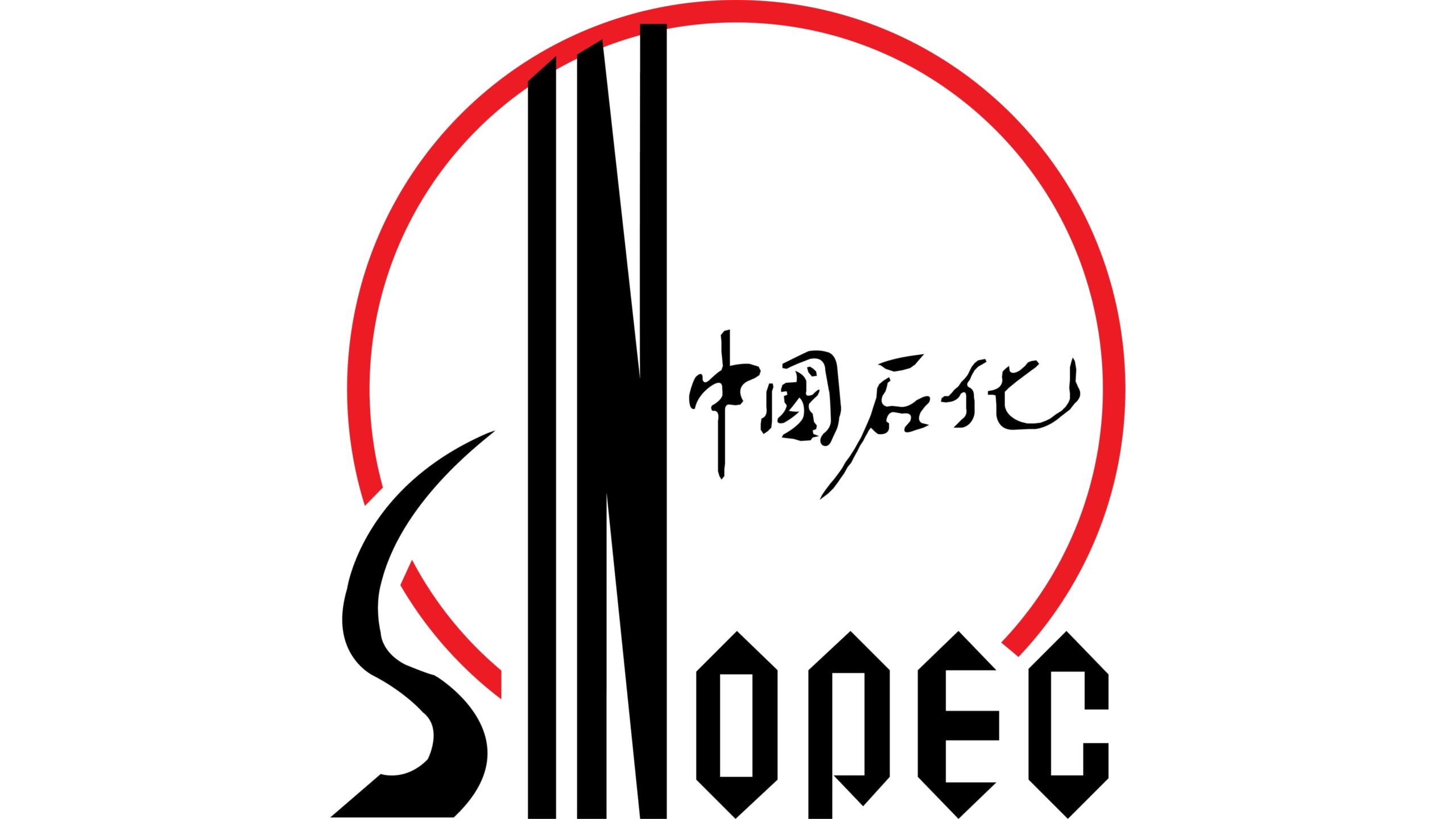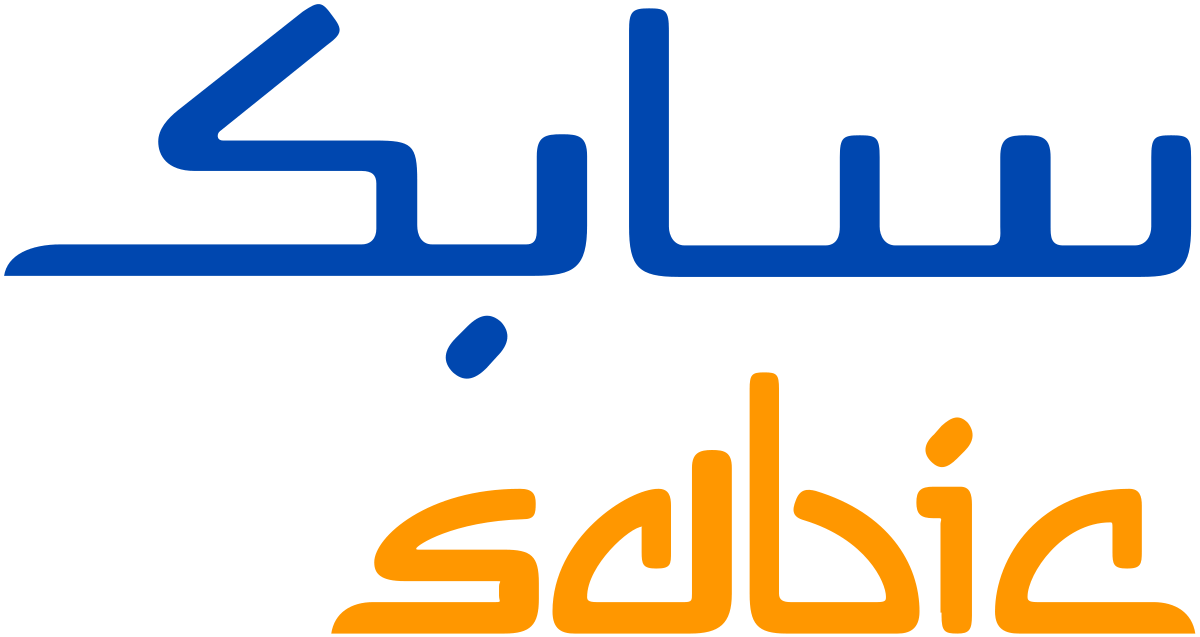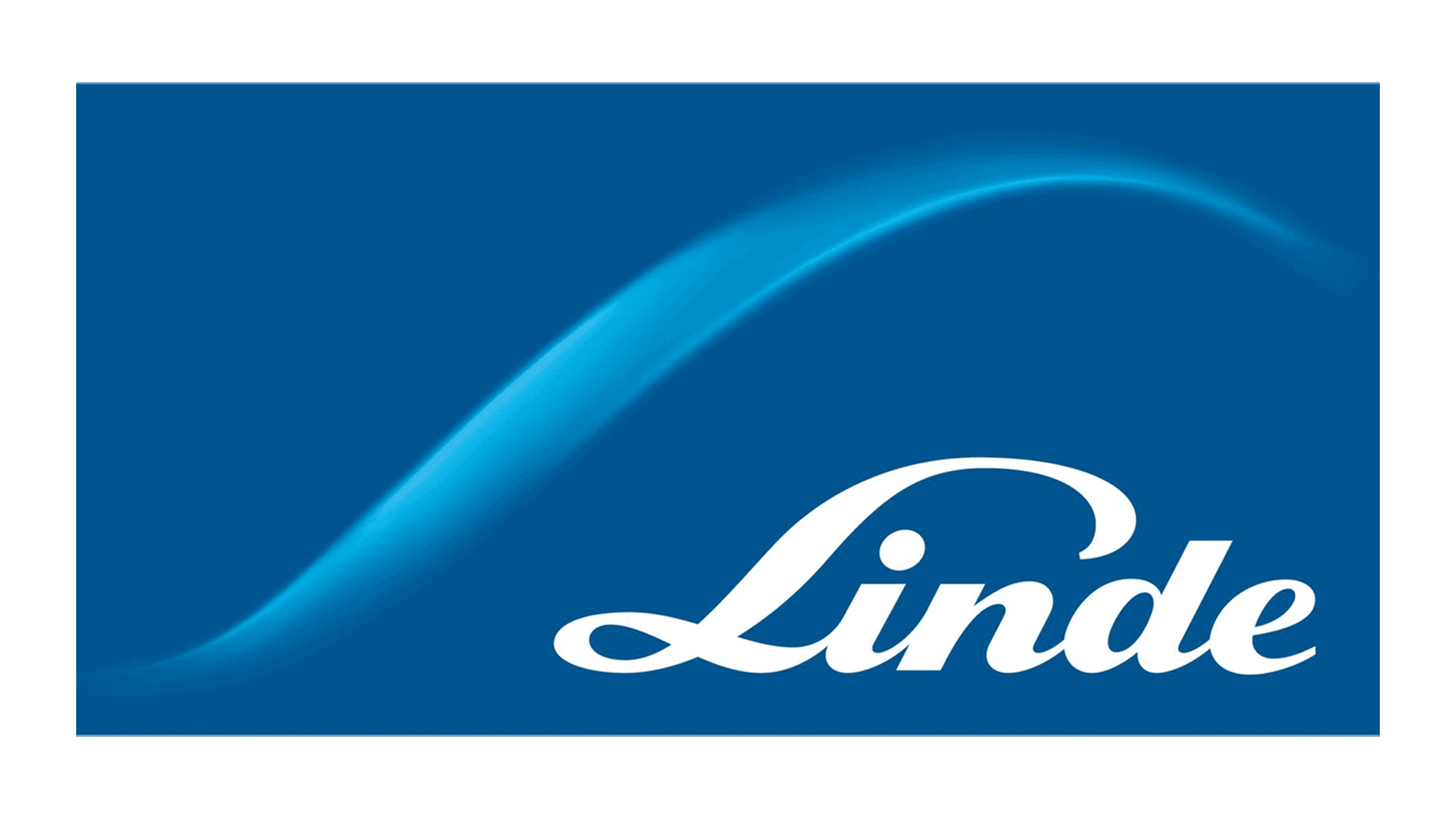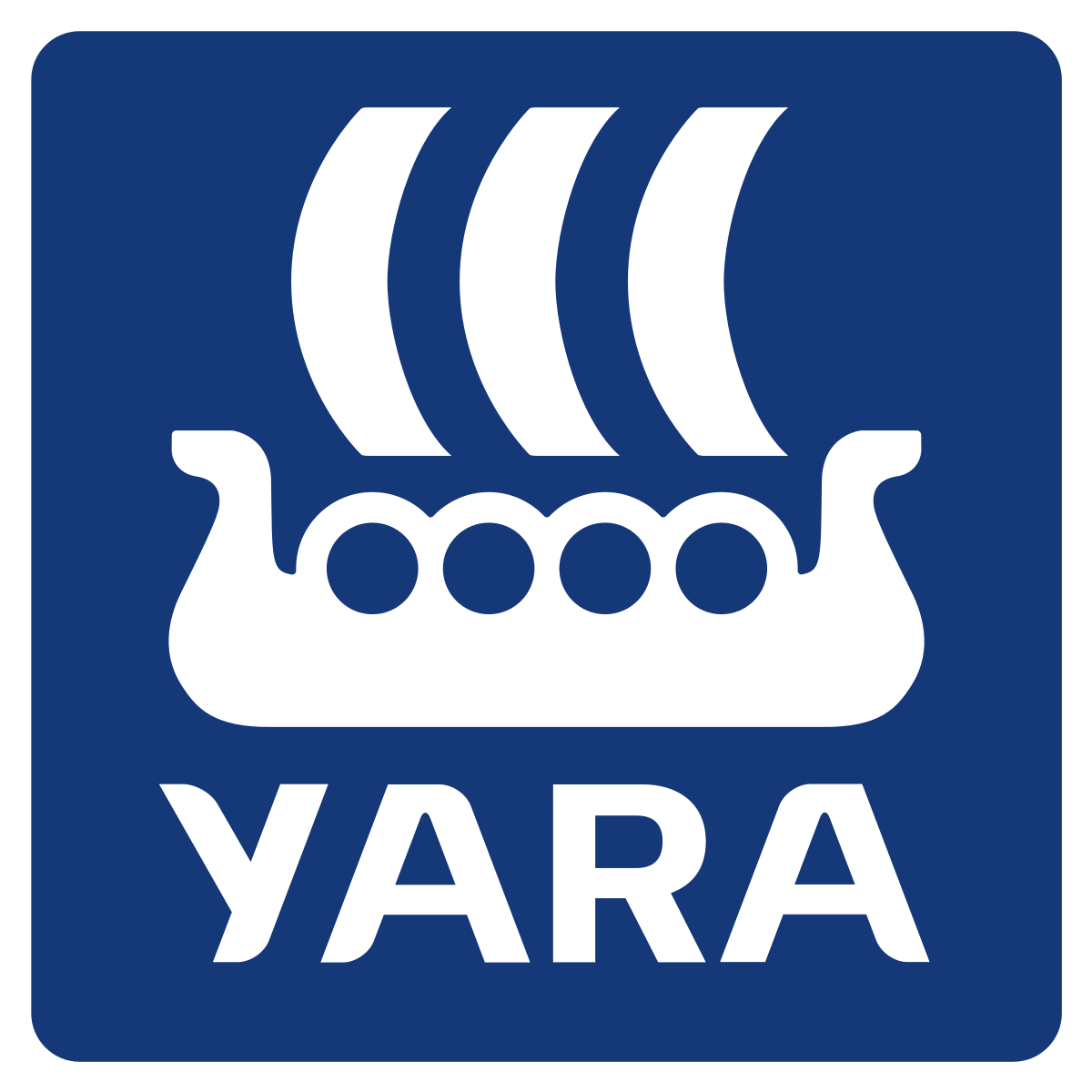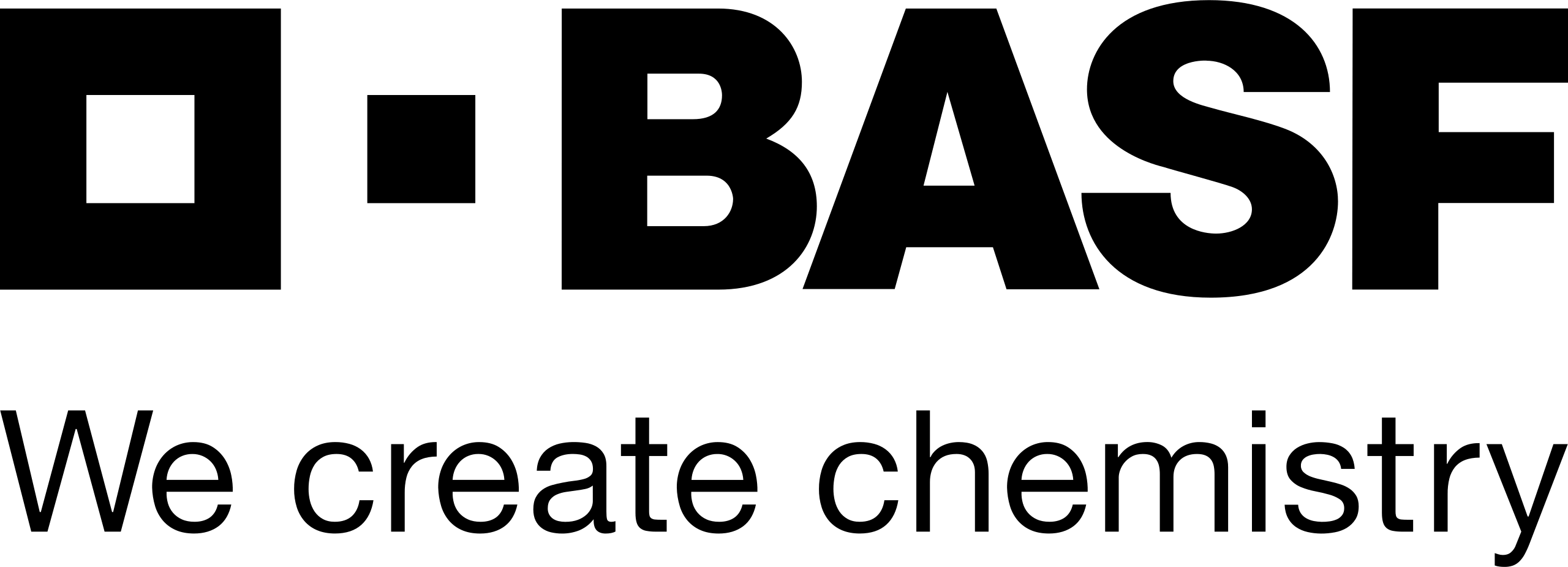Global Rainscreen Cladding Market, By Material, By End-User, By Region & Segmental Insights Trends and Forecast, 2023 – 2034
- Industry: Chemicals & Materials
- Report ID: TNR-110-1101
- Number of Pages: 420
- Table/Charts : Yes
- May, 2024
- Base Year : 2024
- No. of Companies : 10+
- No. of Countries : 29
- Views : 10201
- Covid Impact Covered: Yes
- War Impact Covered: Yes
- Formats : PDF, Excel, PPT
Rainscreen cladding is a building envelope system that consists of an outer weather-resistant cladding layer, an air cavity, and a back-up wall. It’s designed to protect buildings from moisture infiltration while allowing for the drainage and ventilation of any moisture that does penetrate the outer cladding layer.
Rainscreen cladding operates as a multi-layered system designed to shield buildings from moisture infiltration while enhancing their visual appeal and energy efficiency. At its core, rainscreen cladding features an outer cladding material, typically composed of durable substances like metal, wood, or fiber cement, chosen for its weather resistance and aesthetic qualities. Behind this outer layer lies a ventilated cavity, acting as a drainage plane and ventilation channel. Any moisture that permeates the cladding is swiftly directed away from the building’s interior, preventing water ingress and potential structural damage. Moreover, this airspace promotes pressure equalization, minimizing the risk of air and water penetration.
A crucial component of the system is the air and moisture barrier, strategically placed to bolster protection against infiltration. Additionally, insulation may be incorporated between the barrier and the structural wall to optimize thermal performance, reducing heat transfer and enhancing energy efficiency. Ultimately, the structural wall forms the solid foundation of the system, providing support and stability. By managing moisture effectively, enhancing aesthetics, and improving energy efficiency, rainscreen cladding emerges as a comprehensive solution for safeguarding buildings against the elements while elevating their architectural appeal.
In terms of revenue, the global rainscreen cladding market was worth US$ 14.1 Bn in 2023, anticipated to witness CAGR of 7.2% During 2024 – 2034.
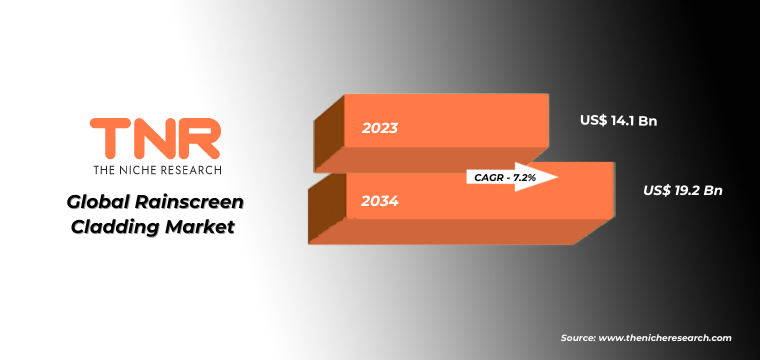
Trends in the Global Rainscreen Cladding Market
- Sustainable Materials: Increasing environmental awareness and regulations are driving the demand for sustainable cladding materials. This includes the use of recycled and eco-friendly materials such as composite panels made from recycled wood fibers or aluminum, as well as responsibly sourced timber and stone.
- Energy Efficiency: There is a growing focus on energy-efficient building practices, leading to the integration of high-performance insulation and thermal barrier technologies within rainscreen cladding systems. These solutions help to improve building energy performance and reduce carbon emissions.
- Design Flexibility: Architects and designers are seeking customizable and aesthetically pleasing cladding solutions to create distinctive facades that reflect the unique character of each building. This trend has fueled the development of new materials, finishes, and configurations that offer greater design flexibility and creativity.
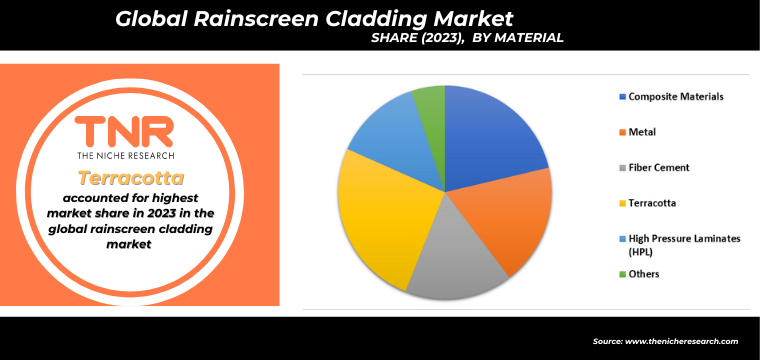
Terracotta has garnered major market share in the global rainscreen cladding market during the forecast period.
Terracotta offers a timeless and natural aesthetic that enhances the visual appeal of buildings. It’s warm earthy tones, texture, and natural variations create a unique and inviting facade that complements a wide range of architectural styles. Architects and designers are drawn to terracotta for its ability to add character and charm to both contemporary and traditional buildings, making it a popular choice for high-end residential, commercial, and institutional projects. Terracotta is a highly versatile material that can be molded and glazed into various shapes, sizes, and finishes. This versatility allows for customized design solutions tailored to specific project requirements and architectural visions.
Whether used as flat panels, baguettes, or tiles, terracotta can be adapted to achieve different textures, patterns, and visual effects, offering endless design possibilities for rainscreen cladding applications. Terracotta’s thermal properties contribute to the energy efficiency of buildings by providing insulation and reducing heat transfer through exterior walls. When used as part of a rainscreen cladding system, terracotta helps to regulate indoor temperatures, improve occupant comfort, and reduce heating and cooling costs. This energy-saving potential is a significant driver of demand, particularly in regions with extreme climates or stringent energy efficiency regulations.
Commercial sector had the highest share in the global rainscreen cladding market in 2023.
Commercial buildings often serve as the face of businesses, reflecting their brand identity and values. Rainscreen cladding offers architects and designers a wide range of design options, including materials, colors, textures, and configurations, allowing them to create visually striking facades that enhance the overall aesthetics and branding of commercial properties. Whether it’s sleek metal panels for a modern office tower or natural stone cladding for a luxury retail storefront, rainscreen cladding enables businesses to make a memorable impression on customers and stakeholders.
Rainscreen cladding can add significant value to commercial properties by enhancing their curb appeal and desirability for tenants. Businesses are increasingly seeking office spaces that offer modern, well-designed exteriors with high-quality finishes and architectural details. Rainscreen cladding can differentiate commercial buildings in competitive real estate markets, attracting tenants who prioritize aesthetics, functionality, and overall building performance. Additionally, a well-maintained and visually appealing exterior can contribute to tenant satisfaction and retention over the long term.
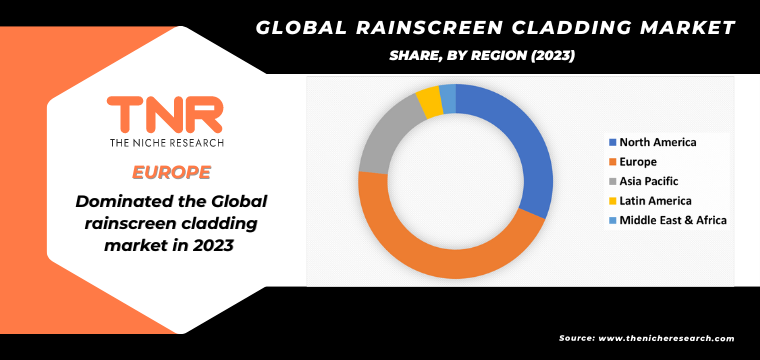
Europe had the largest share in the rainscreen cladding market in 2023.
Europe has stringent energy efficiency regulations aimed at reducing carbon emissions and combating climate change. Rainscreen cladding systems play a crucial role in improving the thermal performance of buildings by providing additional insulation and reducing heat loss or gain through exterior walls. As a result, there is a growing demand for rainscreen cladding solutions that help buildings meet or exceed energy efficiency standards, such as the European Union’s Energy Performance of Buildings Directive (EPBD) and national building codes.
With increasing awareness of environmental issues, there is a strong emphasis on sustainable building practices in Europe. Rainscreen cladding systems made from eco-friendly materials, such as recycled content, responsibly sourced timber, or natural stone, are preferred choices for environmentally conscious architects, developers, and building owners. Additionally, rainscreen cladding systems that contribute to the energy efficiency and overall sustainability of buildings are in high demand, aligning with European Union initiatives promoting green construction and circular economy principles.
Competitive Landscape: Some of the players operating in the global rainscreen cladding market are:
- Carea Ltd.
- Celotex Ltd.
- Centria International
- CGL Facades Co.
- Dow Building Solutions
- Eco Earth Solutions Pvt. Ltd.
- Euro Panels Overseas N.V.
- Everest Industries Ltd.
- FunderMax
- Kingspan Insulation plc
- F. Murray Companies, Inc.
- Middle East Insulation LLC
- OmniMax International, Inc.
- Rockwool International A/S
- Trespa International B.V.
- Other Industry Participants
Global Rainscreen Cladding Market
| Report Specifications | Details |
| Market Revenue in 2023 | US$ 14.1 Bn |
| Market Size Forecast by 2034 | US$ 19.2 Bn |
| Growth Rate (CAGR) | 7.2% |
| Historic Data | 2016 – 2022 |
| Base Year for Estimation | 2023 |
| Forecast Period | 2024 – 2034 |
| Report Inclusions | Market Size & Estimates, Market Dynamics, Competitive Scenario, Trends, Growth Factors, Market Determinants, Key Investment Segmentation, Product/Service/Solutions Benchmarking |
| Segments Covered | By Material, By End-User |
| Regions Covered | North America, Europe, Asia Pacific, Middle East & Africa, Latin America |
| Countries Covered | U.S., Canada, Mexico, Rest of North America, France, The UK, Spain, Germany, Italy, Nordic Countries (Denmark, Finland, Iceland, Sweden, Norway), Benelux Union (Belgium, The Netherlands, Luxembourg), Rest of Europe, China, Japan, India, New Zealand, Australia, South Korea, Southeast Asia (Indonesia, Thailand, Malaysia, Singapore, Rest of Southeast Asia), Rest of Asia Pacific, Saudi Arabia, UAE, Egypt, Kuwait, South Africa, Rest of Middle East & Africa, Brazil, Argentina, Rest of Latin America |
| Key Players | Carea Ltd., Celotex Ltd., Centria International, CGL Facades Co., Dow Building Solutions, Eco Earth Solutions Pvt. Ltd., Euro Panels Overseas N.V., Everest Industries Ltd., FunderMax, Kingspan Insulation plc, M.F. Murray Companies, Inc., Middle East Insulation LLC, OmniMax International, Inc., Rockwool International A/S, Trespa International B.V., Other Industry Participants |
| Customization Scope | Customization allows for the inclusion/modification of content pertaining to geographical regions, countries, and specific market segments. |
| Pricing & Procurement Options | Explore purchase options tailored to your specific research requirements |
| Contact Details | Consult With Our Expert
Japan (Toll-Free): +81 663-386-8111 South Korea (Toll-Free): +82-808- 703-126 Saudi Arabia (Toll-Free): +966 800-850-1643 United Kingdom: +44 753-710-5080 United States: +1 302-232-5106 E-mail: askanexpert@thenicheresearch.com
|
Global Rainscreen Cladding Market Scope:
By Material
- Composite Materials
- Metal
- Fiber Cement
- Terracotta
- High Pressure Laminates (HPL)
- Others
By End User
- Residential
- Commercial
- Industrial
- Institutional
- Others
By Region
- North America (U.S., Canada, Mexico, Rest of North America)
- Europe (France, The UK, Spain, Germany, Italy, Nordic Countries (Denmark, Finland, Iceland, Sweden, Norway), Benelux Union (Belgium, The Netherlands, Luxembourg), Rest of Europe)
- Asia Pacific (China, Japan, India, New Zealand, Australia, South Korea, Southeast Asia (Indonesia, Thailand, Malaysia, Singapore, Rest of Southeast Asia), Rest of Asia Pacific)
- Middle East & Africa (Saudi Arabia, UAE, Egypt, Kuwait, South Africa, Rest of Middle East & Africa)
- Latin America (Brazil, Argentina, Rest of Latin America)
Report Layout:
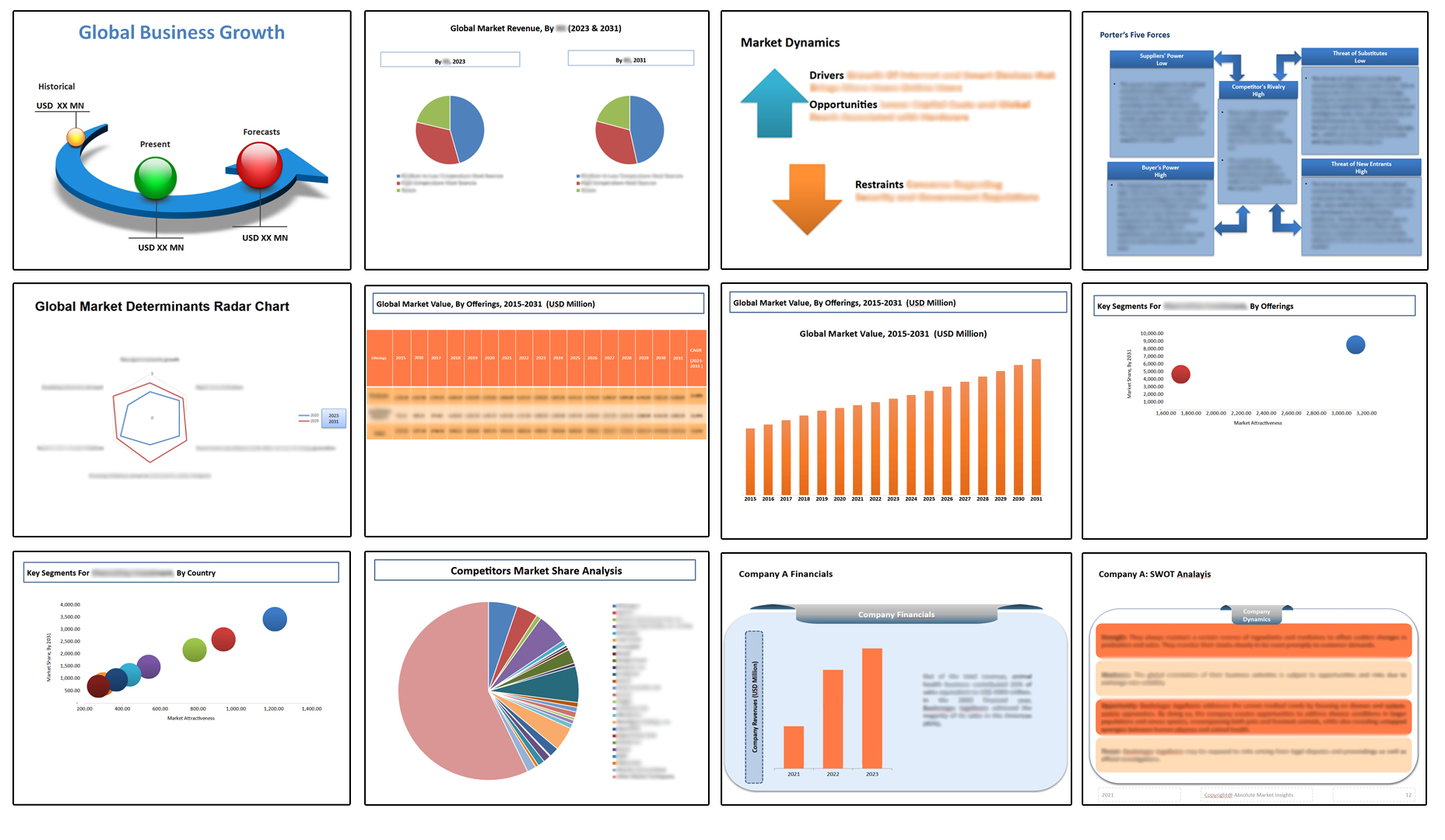
Table of Contents
**Exclusive for Multi-User and Enterprise User.
Global Rainscreen Cladding Market
By Material
- Composite Materials
- Metal
- Fiber Cement
- Terracotta
- High Pressure Laminates (HPL)
- Others
By End User
- Residential
- Commercial
- Industrial
- Institutional
- Others
By Region
- North America (U.S., Canada, Mexico, Rest of North America)
- Europe (France, The UK, Spain, Germany, Italy, Nordic Countries (Denmark, Finland, Iceland, Sweden, Norway), Benelux Union (Belgium, The Netherlands, Luxembourg), Rest of Europe)
- Asia Pacific (China, Japan, India, New Zealand, Australia, South Korea, Southeast Asia (Indonesia, Thailand, Malaysia, Singapore, Rest of Southeast Asia), Rest of Asia Pacific)
- Middle East & Africa (Saudi Arabia, UAE, Egypt, Kuwait, South Africa, Rest of Middle East & Africa)
- Latin America (Brazil, Argentina, Rest of Latin America)
The Niche Research approach encompasses both primary and secondary research methods to provide comprehensive insights. While primary research is the cornerstone of our studies, we also incorporate secondary research sources such as company annual reports, premium industry databases, press releases, industry journals, and white papers.
Within our primary research, we actively engage with various industry stakeholders, conducting paid interviews and surveys. Our meticulous analysis extends to every market participant in major countries, allowing us to thoroughly examine their portfolios, calculate market shares, and segment revenues.
Our data collection primarily focuses on individual countries within our research scope, enabling us to estimate regional market sizes. Typically, we employ a bottom-up approach, meticulously tracking trends in different countries. We analyze growth drivers, constraints, technological innovations, and opportunities for each country, ultimately arriving at regional figures.Our process begins by examining the growth prospects of each country. Building upon these insights, we project growth and trends for the entire region. Finally, we utilize our proprietary model to refine estimations and forecasts.
Our data validation standards are integral to ensuring the reliability and accuracy of our research findings. Here’s a breakdown of our data validation processes and the stakeholders we engage with during our primary research:
- Supply Side Analysis: We initiate a supply side analysis by directly contacting market participants, through telephonic interviews and questionnaires containing both open-ended and close-ended questions. We gather information on their portfolios, segment revenues, developments, and growth strategies.
- Demand Side Analysis: To gain insights into adoption trends and consumer preferences, we reach out to target customers and users (non-vendors). This information forms a vital part of the qualitative analysis section of our reports, covering market dynamics, adoption trends, consumer behavior, spending patterns, and other related aspects.
- Consultant Insights: We tap into the expertise of our partner consultants from around the world to obtain their unique viewpoints and perspectives. Their insights contribute to a well-rounded understanding of the markets under investigation.
- In-House Validation: To ensure data accuracy and reliability, we conduct cross-validation of data points and information through our in-house team of consultants and utilize advanced data modeling tools for thorough verification.
The forecasts we provide are based on a comprehensive assessment of various factors, including:
- Market Trends and Past Performance (Last Five Years): We accurately analyze market trends and performance data from preceding five years to identify historical patterns and understand the market’s evolution.
- Historical Performance and Growth of Market Participants: We assess the historical performance and growth trajectories of key market participants. This analysis provides insights into the competitive landscape and individual company strategies.
- Market Determinants Impact Analysis (Next Eight Years): We conduct a rigorous analysis of the factors that are projected to influence the market over the next eight years. This includes assessing both internal and external determinants that can shape market dynamics.
- Drivers and Challenges for the Forecast Period:Identify the factors expected to drive market growth during the forecast period, as well as the challenges that the industry may face. This analysis aids in deriving an accurate growth rate projection.
- New Acquisitions, Collaborations, or Partnerships: We keep a close watch on any new acquisitions, collaborations, or partnerships within the industry. These developments can have a significant impact on market dynamics and competitiveness.
- Macro and Micro Factors Analysis:A thorough examination of both macro-level factors (e.g., economic trends, regulatory changes) and micro-level factors (e.g., technological advancements, consumer preferences) that may influence the market during the forecast period.
- End-User Sentiment Analysis: To understand the market from the end-user perspective, we conduct sentiment analysis. This involves assessing the sentiment, preferences, and feedback of the end-users, which can provide valuable insights into market trends.
- Perspective of Primary Participants: Insights gathered directly from primary research participants play a crucial role in shaping our forecasts. Their perspectives and experiences provide valuable qualitative data.
- Year-on-Year Growth Trend: We utilize a year-on-year growth trend based on historical market growth and expected future trends. This helps in formulating our growth projections, aligning them with the market’s historical performance.
Research process adopted by TNR involves multiple stages, including data collection, validation, quality checks, and presentation. It’s crucial that the data and information we provide add value to your existing market understanding and expertise. We have also established partnerships with business consulting, research, and survey organizations across regions and globally to collaborate on regional analysis and data validation, ensuring the highest level of accuracy and reliability in our reports.


